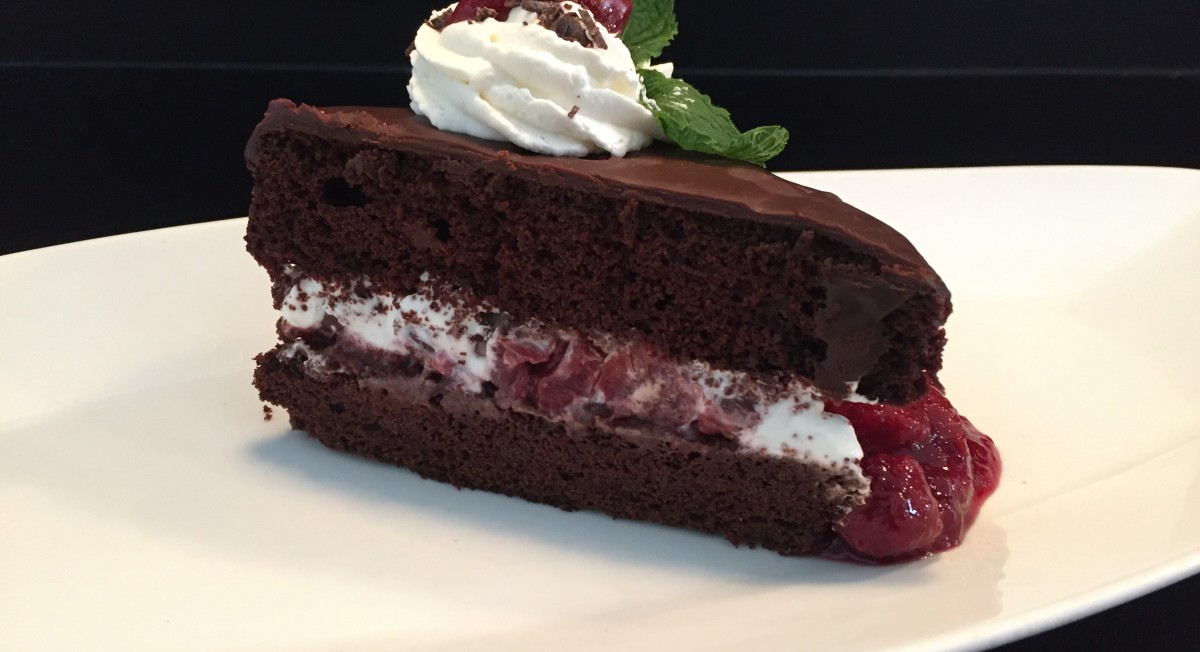Ever wonder why desserts have a specific name? We prepare and eat these items on a regular basis and most likely do not know the background of their existence. Here is a list of ten popular cakes and where their names originate.
Angel Food Cake
This cloudlike fluffy cake is a true labour of love. It is made by whisking many egg whites with cream of tartar to a very stiff consistency, then adding in sugar and flour. It is baked in a tube pan and tipped upside down once baked to preserve the light airy texture. The first printed recipe dates back to the 1870s when the rotary beater first became popular. This makes sense, as bakers could more easily produce this cake. The name is said to come from a baker who thought it was sinful to waste egg whites after making noodles. Thus, angel cake or angel food cake.
Black Forest Cake
Called Schwarzwälder Kirschtorte in German, which means Black Forest Cake, this deliciously rich gateau has many layers. It consists of chocolate cake layers soaked in Kirsch, a clear double-distilled alcohol made from cherries, whipped cream, Morello cherries and chocolate curls. It is said to be named after the Black Forest area in southwest Germany. The forests were thick and dark from all the fir and pine trees. The women in this area wore traditional costumes of black dresses, puffy white blouses, and red hats with large red pom-poms. Some historians believe the cake was modeled after these costumes.
Blondie
A blondie is simply a treat that resembles a brownie in its cooking procedure and texture, but a blondie contains no chocolate or cocoa powder. People may confuse a blondie with a white chocolate brownie. Traditionally, a blondie gets its blonde color and flavour from brown sugar, butter and vanilla. The name comes from the beautiful light brown color of this baked treat.
Bundt Cake
This cake originates from Germany and Austria where it was called bundkuchen, known as a ring-shaped coffee cake. In the 1950s a new pan was invented to prepare this popular cake as the original ceramic pans were too fragile and cast iron were much too heavy. The inventor, H. David Dalquist, trademarked the pan and named it the “bundt” pan. Moving forward any coffee cake prepare in this ring-shaped pan was known as a bundt cake.
Devil’s Food Cake
This decadent chocolate creation is said to be named as the contrast to angel food cake. It dark brown color and dense texture is the complete opposite of the snow white, light and fluffy angel food cake. The addition of dark chocolate is considered to be sinful. The mixture of extra baking soda and cocoa powder in the recipe also creates a reddish color to the cake which promotes the devilish theme.
Opera Cake
This layered delight starts with almond sponge cake soaked in coffee syrup, coffee-flavoured buttercream, chocolate ganache and is covered in a chocolate glaze. It is traditionally decorated with the word opera on the top and is crowned with a piece of gold leaf. There are a few different versions of how this cake originated. My favourite story states this luscious cake was invented in 1955 by a great French pastry chef. His wife said the layers of the cake reminded her of the Paris Opera House, thus the name, opera cake.
Pound Cake
Early recipes for this cake were made up of one pound of butter, one pound of sugar, one pound of eggs and one pound of flour. The name is clear: pound cake. Modern-day recipes have replaced some of the butter and eggs with milk for a lighter, fluffier cake.
Strawberry Shortcake
This simple dessert is always a crowd pleaser. The biscuit-like cake or scone used as the base of this treat is known as a shortcake. Shortcakes were originally any cake-like item that was high in fat; the fat used in these recipes was shortening, hence the name, shortcake. The strawberries are the feature ingredient, as a result, strawberry shortcake.
Tiramisu
This Italian classic is smooth, rich and satisfying. Directly translated the name in Italian means “carry me up” or “pick me up,” referring to the high energy and high caffeine levels in this dessert. The raw eggs, sugar and strong espresso coffee are sure to give anyone a little buzz.
Vinarterta
This Icelandic favourite had been a staple for Christmas, weddings and celebrations since the early twentieth century. This seven-layer cake is filled with prunes, raspberries or a variation of both. The seven layers are said to be made to represent the seven days of the week. The direct meaning is “Vienna Cake,” which many say is related to the first baker to create this cake who was originally from Austria. Others say is it was named after the highly refined cake flour used in the recipe that was produced in Austria.
***
Melissa Hryb is the chef at Marion Street Eatery, where she specializes in hearty comfort food with a twist.
Follow her on Twitter @MarionStreetEat or Instagram @MarionStreetEatery
